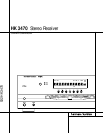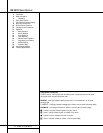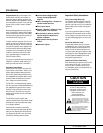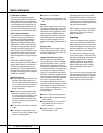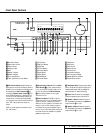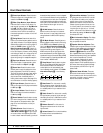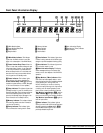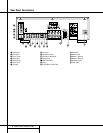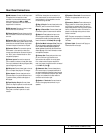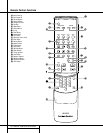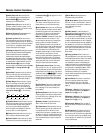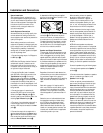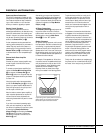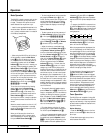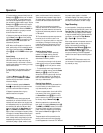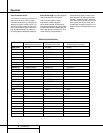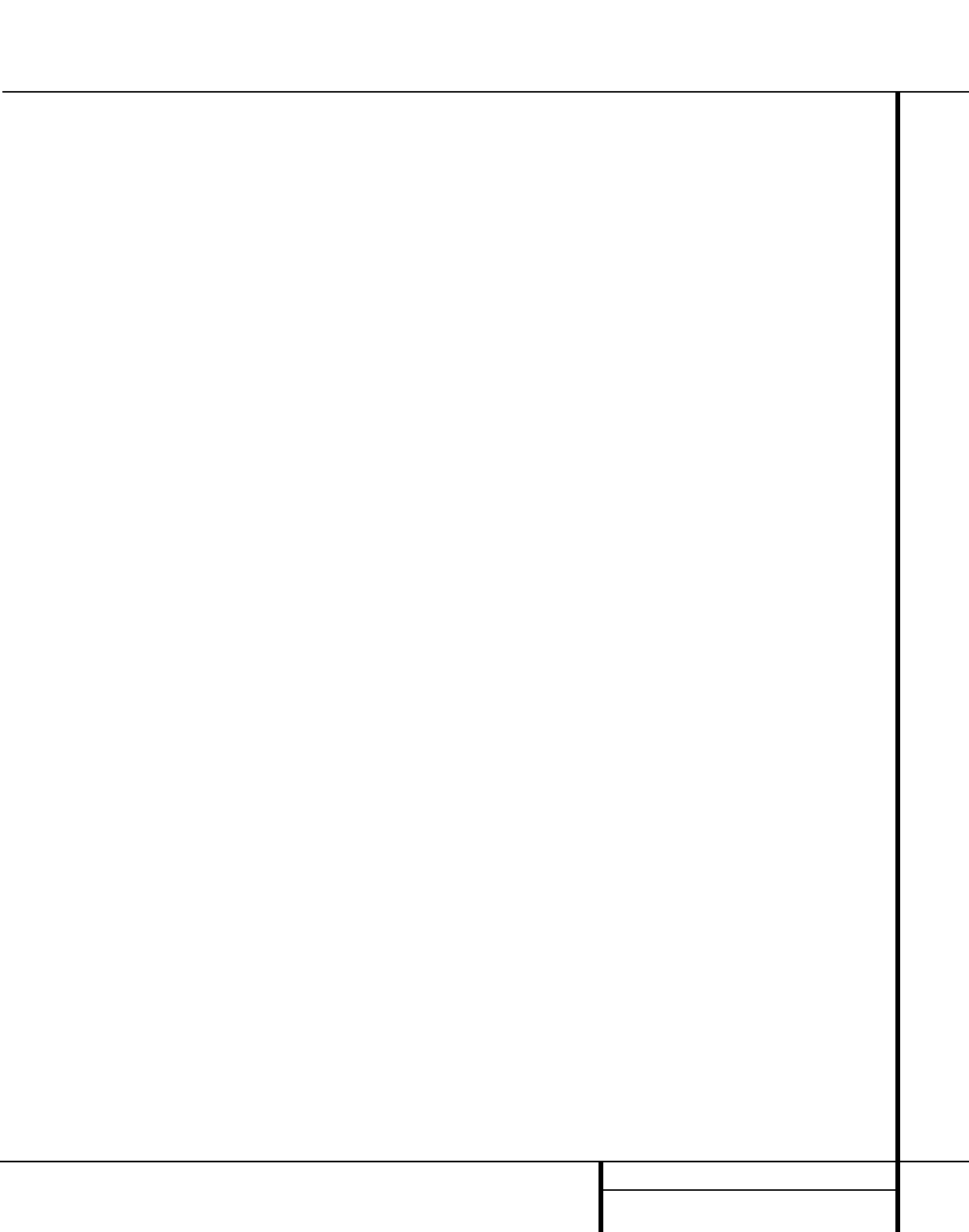
9 REAR PANEL CONNECTIONS
Rear Panel Connections
¡ AM Antenna: Connect the AM loop anten-
na supplied with the receiver to these
terminals. If an external AM antenna is used,
make connections to the AM and GND
terminals in accordance with the instructions
supplied with the antenna.
™ FM Antenna: Connect an indoor or exter-
nal FM antenna to this terminal.
£ Phono Ground: Connect the ground wire
from a turntable to this terminal to reduce sys-
tem hum.
¢ Remote IR In: If the HK 3470’s front panel
IR sensor is blocked due to cabinet doors or other
obstructions, an external IR sensor may be used.
Connect the output of the sensor to this jack.
∞ Remote IR Out: This connection permits
the IR sensor in the receiver to serve other
remote-controlled devices. Connect this jack to
the “IR IN” jack on Harman Kardon or other
compatible equipment.
§ Phono Inputs: Connect the outputs of
your turntable or tonearm to these jacks. Note
that only turntables with Moving Magnet (MM)
type cartridges may be used.
¶ CD Inputs: Connect these jacks to the out-
put of a compact disc player or CD changer.
• Aux Inputs: Connect these jacks to the
line-level output of any audio device such as a
TV, cable converter, portable audio player or
MP3 player.
ª Tape Monitor Play/In: Connect these
jacks to the Play/Out jacks of an audio recorder.
‚ Tape Monitor Record/Out: Connect
these jacks to the Rec/In jacks of an audio
recorder.
NOTE: When these jacks are connected to a
three-head recorder or another device with off-
head playback, it will be possible to monitor
the source being recorded.
⁄ Tape 2 Play/In: Connect these jacks to the
PLAY/OUT jacks of a second audio recorder.
¤ Tape 2 Record/Out: Connect these jacks
to the Rec/In jacks of a second audio recorder.
‹ Main In: These jacks are the input to the
HK 3470’s power amplifier. Unless an external
power amplifier is used, the jumper pins should
remain connected to the Preamp Out jacks fi.
› Pre-Out/Main-In Jumper Pins: These pins
connect the receiver’s preamp and amplifier sec-
tions. Unless an external amplifier, equalizer or
speaker processor is used, they should be left con-
nected. See page 13 for more information on exter-
nal amplifier connections.
fi Preamp Out: These jacks provide an out-
put for the left and right channels to an
optional external amplifier. In normal opera-
tion, unless an external power amplifier is
used, the jumper pins should remain connected
to the Main In jacks ‹.
fl Subwoofer Out: Connect these jacks to
the line-level input of a powered subwoofer. If
an external subwoofer amplifier is used, connect
this jack to the subwoofer amplifier input. When
a single, mono subwoofer is used, make the
connection to the bottom jack.
‡ Speaker 1 Terminals: Connect these ter-
minals to the appropriate terminals on your
speakers.
° Speaker 2 Terminals: Connect these ter-
minals to the appropriate terminals on your
speakers.
· Accessory Outlets: These outlets may be
used to power low-current draw devices such
as CD players or cassette decks. The power to
these outlets remains on as long as the receiver
itself is on. When the receiver is turned off, or
placed in the Standby mode, power to these
outlets is removed.
NOTE: The power consumption of the devices
plugged into these outlets should not exceed
100 watts.
a Power Cable: Connect the AC plug to a
nonswitched AC wall output.



